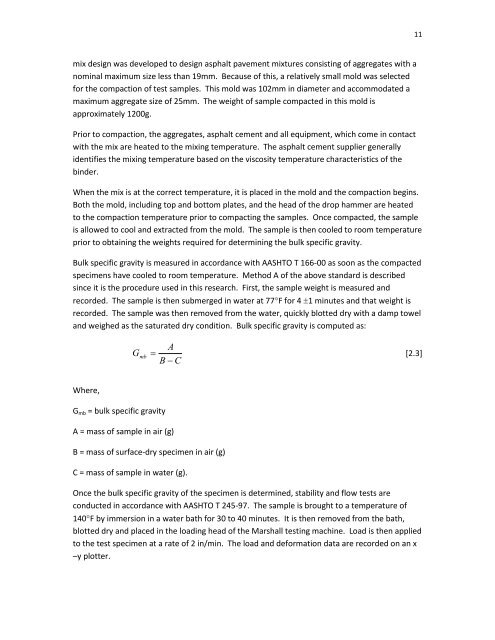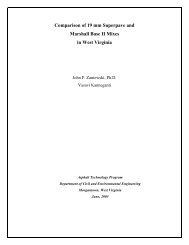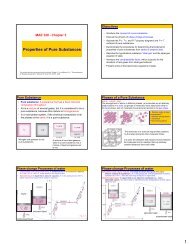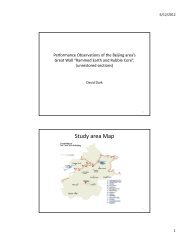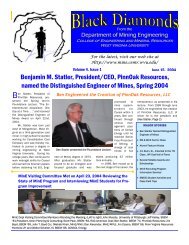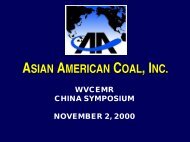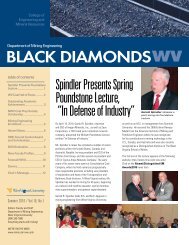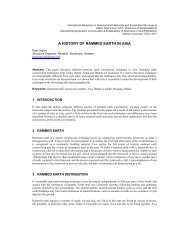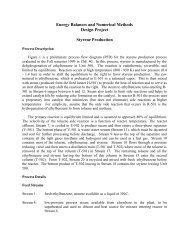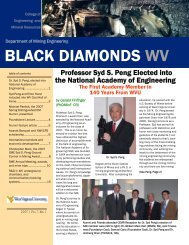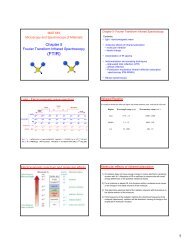Comparison of 9.5 mm SuperPave and Marshall Wearing I Mixes in ...
Comparison of 9.5 mm SuperPave and Marshall Wearing I Mixes in ...
Comparison of 9.5 mm SuperPave and Marshall Wearing I Mixes in ...
Create successful ePaper yourself
Turn your PDF publications into a flip-book with our unique Google optimized e-Paper software.
11mix design was developed to design asphalt pavement mixtures consist<strong>in</strong>g <strong>of</strong> aggregates with anom<strong>in</strong>al maximum size less than 19<strong>mm</strong>. Because <strong>of</strong> this, a relatively small mold was selectedfor the compaction <strong>of</strong> test samples. This mold was 102<strong>mm</strong> <strong>in</strong> diameter <strong>and</strong> acco<strong>mm</strong>odated amaximum aggregate size <strong>of</strong> 25<strong>mm</strong>. The weight <strong>of</strong> sample compacted <strong>in</strong> this mold isapproximately 1200g.Prior to compaction, the aggregates, asphalt cement <strong>and</strong> all equipment, which come <strong>in</strong> contactwith the mix are heated to the mix<strong>in</strong>g temperature. The asphalt cement supplier generallyidentifies the mix<strong>in</strong>g temperature based on the viscosity temperature characteristics <strong>of</strong> theb<strong>in</strong>der.When the mix is at the correct temperature, it is placed <strong>in</strong> the mold <strong>and</strong> the compaction beg<strong>in</strong>s.Both the mold, <strong>in</strong>clud<strong>in</strong>g top <strong>and</strong> bottom plates, <strong>and</strong> the head <strong>of</strong> the drop ha<strong>mm</strong>er are heatedto the compaction temperature prior to compact<strong>in</strong>g the samples. Once compacted, the sampleis allowed to cool <strong>and</strong> extracted from the mold. The sample is then cooled to room temperatureprior to obta<strong>in</strong><strong>in</strong>g the weights required for determ<strong>in</strong><strong>in</strong>g the bulk specific gravity.Bulk specific gravity is measured <strong>in</strong> accordance with AASHTO T 166-00 as soon as the compactedspecimens have cooled to room temperature. Method A <strong>of</strong> the above st<strong>and</strong>ard is describeds<strong>in</strong>ce it is the procedure used <strong>in</strong> this research. First, the sample weight is measured <strong>and</strong>recorded. The sample is then submerged <strong>in</strong> water at 77 F for 4 1 m<strong>in</strong>utes <strong>and</strong> that weight isrecorded. The sample was then removed from the water, quickly blotted dry with a damp towel<strong>and</strong> weighed as the saturated dry condition. Bulk specific gravity is computed as:AG mb[2.3]B CWhere,G mb = bulk specific gravityA = mass <strong>of</strong> sample <strong>in</strong> air (g)B = mass <strong>of</strong> surface-dry specimen <strong>in</strong> air (g)C = mass <strong>of</strong> sample <strong>in</strong> water (g).Once the bulk specific gravity <strong>of</strong> the specimen is determ<strong>in</strong>ed, stability <strong>and</strong> flow tests areconducted <strong>in</strong> accordance with AASHTO T 245-97. The sample is brought to a temperature <strong>of</strong>140 F by i<strong>mm</strong>ersion <strong>in</strong> a water bath for 30 to 40 m<strong>in</strong>utes. It is then removed from the bath,blotted dry <strong>and</strong> placed <strong>in</strong> the load<strong>in</strong>g head <strong>of</strong> the <strong>Marshall</strong> test<strong>in</strong>g mach<strong>in</strong>e. Load is then appliedto the test specimen at a rate <strong>of</strong> 2 <strong>in</strong>/m<strong>in</strong>. The load <strong>and</strong> deformation data are recorded on an x–y plotter.


